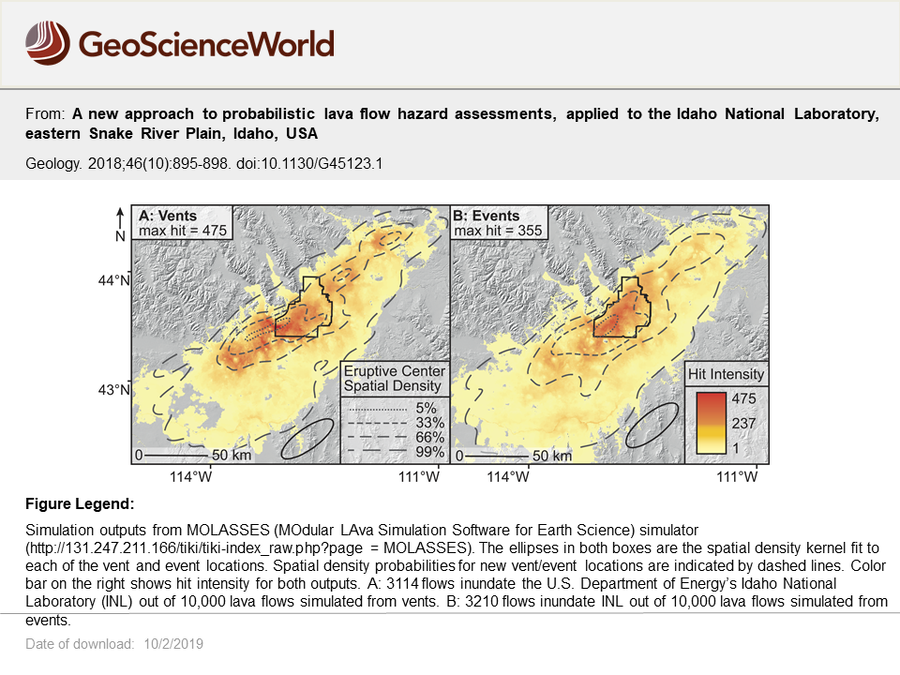Simulation outputs from MOLASSES (MOdular LAva Simulation Software for Earth Science) simulator
Eastern Snake River Plain, United States, 2018
Figure 3 in: Gallant, E., Richardson, J., Connor, C., Wetmore, P., Connor, L. (2018). A new approach to probabilistic lava flow hazard assessments, applied to the Idaho National Laboratory, eastern Snake River Plain, Idaho, USA. Geology, 46 (10), p. 895–898. https://doi.org/10.1130/G45123.1
This hazard map is the result of scientific research and was published in academic literature.
It is presented here to serve as an example of the map type or the map-making methodology. It is NOT the official, operational map. For the current operational hazard map, please consult the proper institutional authorities.

Click on image for full-size map. If link seems broken, try the archived version.
Map Data
Map ID 1134 Hazard Process(es) Lava flows Hazard Zone Presentation Single hazard: A single hazard process is represented on a series of small map panels of similar sizes Temporal Scale Background, or long-term, map Spatial Scale Volcano and surrounding area Publication Format Figure in a journal article Zonation Method(s) Probabilistic modeling Zonation Model(s) MOLASSES (Connor et al. 2012) Scenario(s) Considered Source location or direction Hazard Zone Label(s) Numeric probability Probability Definition(s) Numeric probability Purpose Scientific interest: Intended for scientific research and general scientific interest; usually published in academic journals Audience Scientists (usually in scientific publication) Language(s) English Basemap(s) Hillshade Basemap overlay(s) Diemsionality Planimetric (2D or map) view Color Scheme Red to Yellow
